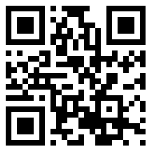We all want to engage our target audience, get them involved in our products/brands but sometimes we don’t remove enough of the resistance from their path to make potential audience members become engaged.
I am currently on holiday with my father doing some family history on the Isle of Scilly, during a walk around St. Marys we popped into a coffee shop for a break, on the table there was a small cardboard advert. This advert was two sided, one saying about how the shop was running a competition on Facebook where if you liked their page you could win an iPod Nano and the other said about winning a three course meal by writing a review on TripAdvisor. This coffee shop was well out of the way of most of the tourists so wasn’t likely to get that many people ‘liking’ their page, so there was a reasonable chance of winning, so all I needed to do was to go to Facebook, find their page and like it, while that isn’t a lot of work it was still enough for me to think about it, question whether to bother and then decide not to. Ideally the interaction would have been that I saw that I could win an iPod and I would within a couple seconds have liked their page.
What is customer resistance?
When you are trying to get your customers to perform some action whether it be like your Facebook page, purchase an item or donate money minimising the amount of effort that they have to make will increase your uptake. A great example of a company that has done what it can to ensure that there is minimal resistance between the user thinking that they would like a product and them having purchased it is Amazon, they have achieved this through their one click purchasing, where you can have your account set up so that you can buy an item with only one click, where it will automatically use the set up payment and delivery options. This means that users make snap decisions, thinking “a bumble bee costume for my dog cat is an amazing idea” (yes you can actually buy a bumble bee costume for your dog/cat) and before they can start second guessing themselves they’ve already bought it.
Examples of ways of minimising the resistance
So what sort of things can we do to decrease the resistance for the user to engaging with our brand?
Minimise number of clicks to achieve a desired action
As with the Amazon example above, if the user only has to do one mouse click to achieve something they are much more likely to complete that action than one that requires ten. Having the user need to perform a larger number of actions to achieve their goal can also work to your benefit, a great example of this is a certain mobile insurance company that I used to deal with, in order to cancel their insurance you had to send them a snail mail letter, it couldn’t be done by phone or email, this put a larger effort for the customer to cancel their insurance, so are more likely to carry on having the few pounds a month be taken from their account.

QR Codes
QR Codes are matrix barcodes, which contain a certain amount of data which can be text, urls, phone numbers etc. an example of a QR code is below, if you scan it with a phone or other device that can read QR codes it will give you the URL for this website.

You will probably have seen this in action at train stations and other places where you can’t expect your potential customer to stand around for ages, you need to engage them quickly and get them looking at your offerings. There is a complex of flats being built at the end of my road in London, instead of having large amounts of information on the barriers around the construction site telling people about the flats that are being built, they have a couple photo’s and a QR code which takes the user to their website, where they have more information and better photos. This is a great use of QR codes as the user can quickly go to the website with almost no effort and get up to date information and much more of it than what could be provided on the boards/
Your views
What do you do to increase user engagement?